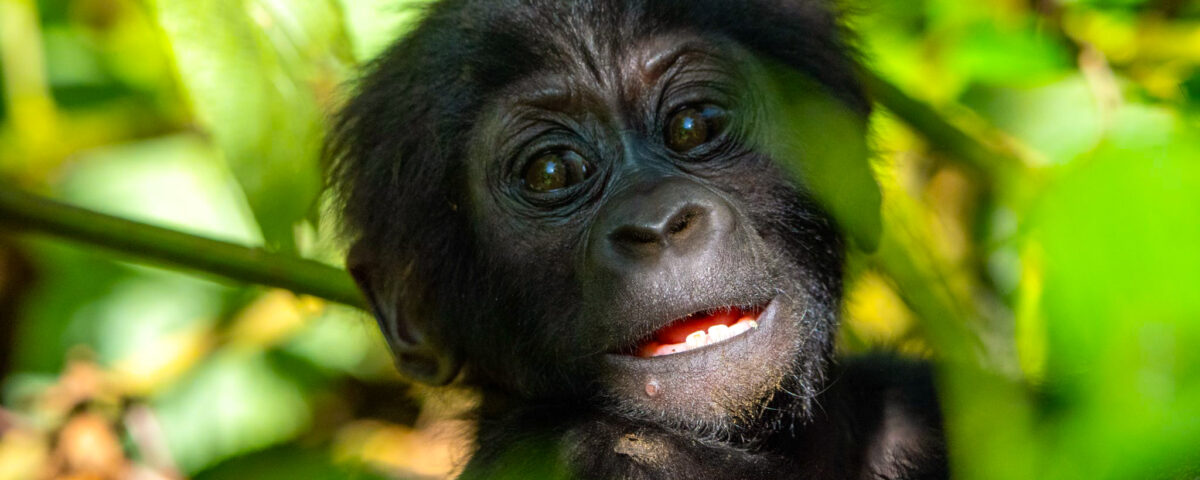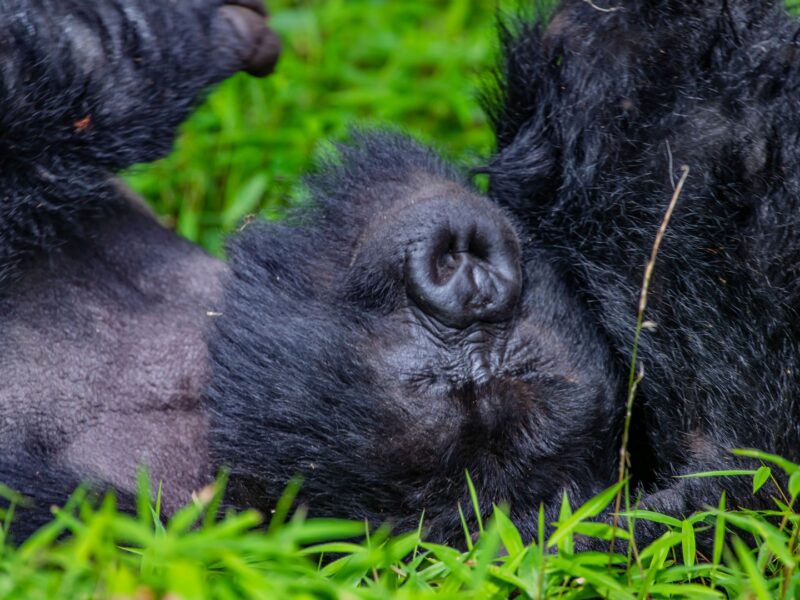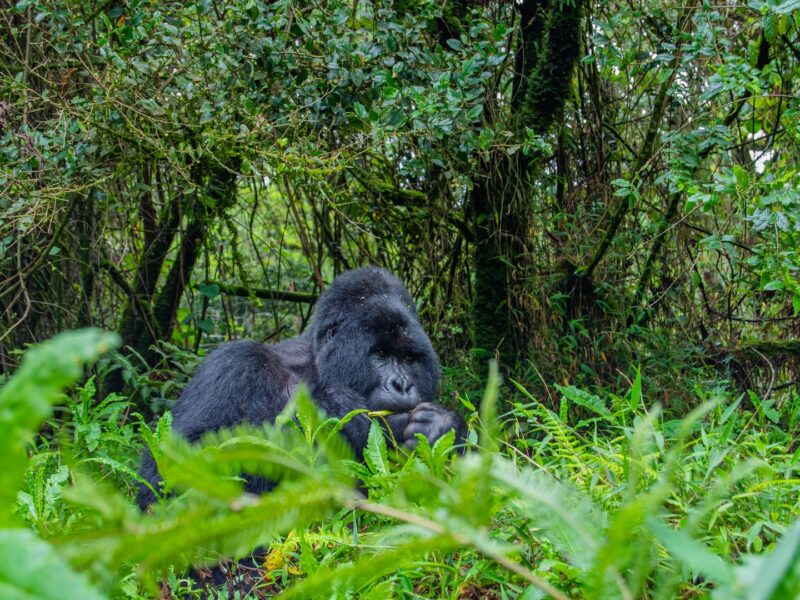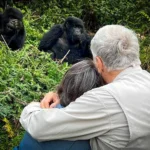
Is It Safe to Sleep in Hotels Near the Gorilla Park?
July 17, 2025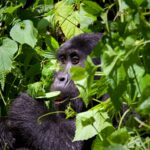
Where Do Gorillas Live
July 18, 2025What Do Gorillas Eat?
Do they eat Meat, Leaves or Insects.
Gorillas are not carnivores.
These gentle giants are herbivores, and they consume a wide range of vegetation that their diverse forest habitats provide.
Depending on the gorilla subspecies and location, the variety and proportion of food types may change.
However, mountain gorillas like those found in Bwindi Impenetrable Forest rely heavily on a plant-based diet.
Their food choices include a rich assortment of leaves, stems, roots, bark, fruits, and flowers.
These apes are known to eat more than 100 different plant species, a diversity that supports their robust health and social structure.
One remarkable trait of their diet is that it provides sufficient moisture, eliminating the need for them drink water directly.
They hydrate through the vegetation and morning dew a fascinating example of how deeply adapted gorillas are to their natural environment.
Among their favourite foods are wild celery, thistles, bamboo shoots, and tree bark.
These offer not only nutrition but also the fibrous content that supports healthy digestion.
During your gorilla trekking safari, you may witness a silverback carefully selecting shoots or a mother gently peeling bark for her young.
It’s an intimate process, quiet and deliberate, and observing it in person is profoundly humbling.
While fruits are a delicacy in many primates’ diets, for mountain gorillas in Uganda.
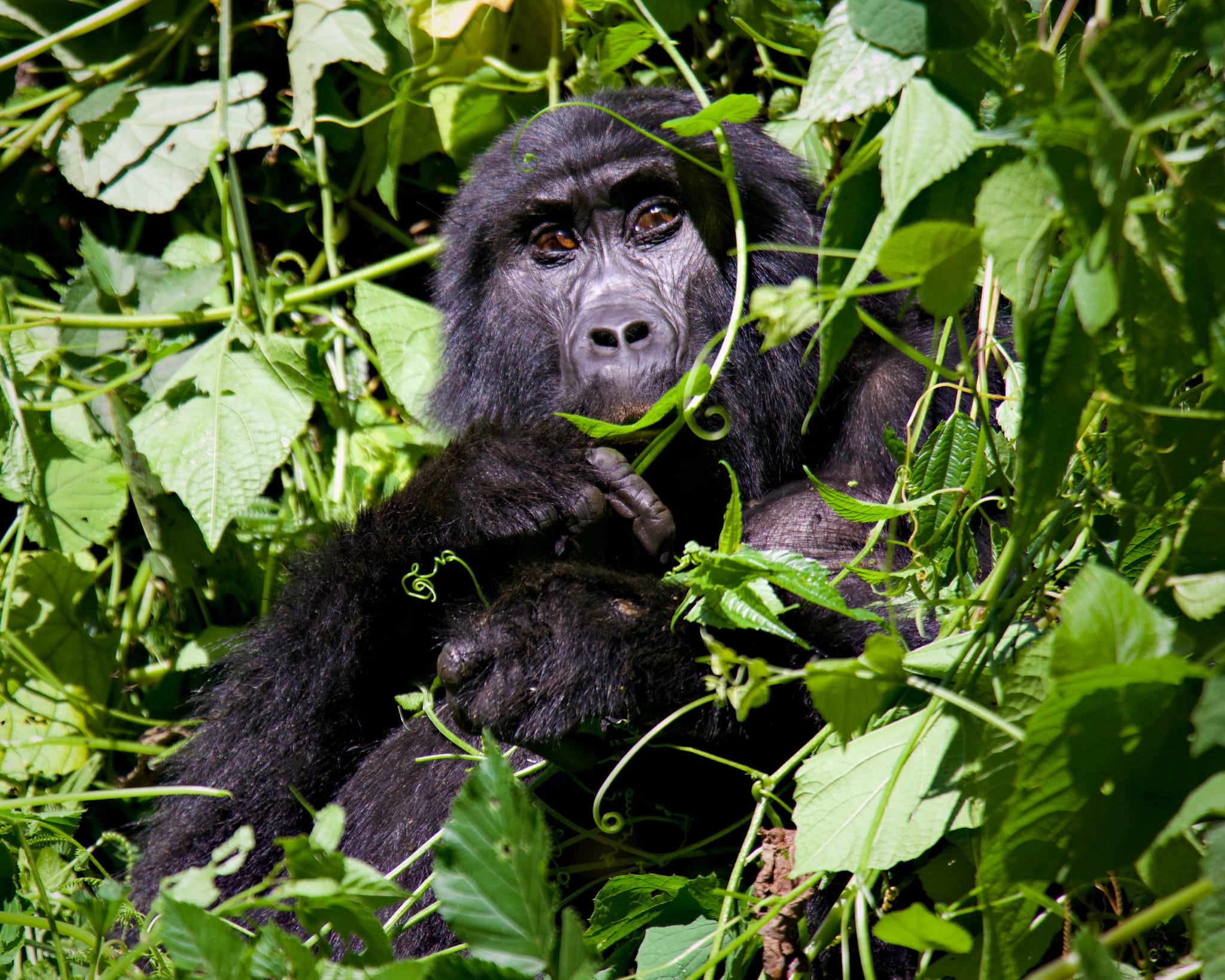
Uganda Gorilla
Do Gorillas Eat Meat or Hunt Like Other Primates?
A common question among travellers on Africa gorilla trekking safaris is whether gorillas eat meat or hunt like chimpanzees.
Gorillas do not hunt or consume small animals.
Unlike their close relatives, chimpanzees, who are known to engage in complex hunting behaviour, gorillas are peaceful foragers.
That said, they do occasionally eat insects, such as ants, termites, and caterpillars, but this is a very small part of their diet often less than 1%.
These insects offer a trace amount of protein consumed accidentally while gorillas are eating plants.
You’re unlikely to witness any insect hunting behaviour during your trek in Bwindi, as it is neither frequent nor deliberate.
Gorillas show no interest in birds, reptiles, or small mammals, making them one of the most plant-reliant great apes.
How Does the Gorilla Diet Support Bwindi’s Ecosystem?
What makes this dietary profile even more extraordinary is how it reflects the gorillas’ role in their ecosystem.
By consuming large amounts of vegetation and occasionally dispersing seeds through their faces, gorillas play a critical role in maintaining the biodiversity of the Bwindi Impenetrable Forest.
Their movements and feeding habits shape the growth patterns of many forest plants, making them not just inhabitants but guardians of their environment.
For visitors engaged in Uganda gorilla safaris, understanding this ecological connection enriches the experience far beyond a simple wildlife sighting.
Activities Combined with Gorilla Trekking
A visit to Bwindi Impenetrable National Park offers far more than just gorilla trekking.
At Ngeye Tours & Travel, we offer comprehensive safari experiences that let you immerse yourself in the region’s rich biodiversity and cultural heritage.
Batwa cultural tours provide a rare opportunity to engage with the indigenous Batwa people the original forest dwellers of Bwindi.
During these guided experiences, you learn about traditional hunting methods, herbal medicine, and forest conservation from a community that once lived side by side with gorillas.
You can combine your Uganda gorilla tours with activities such as bird watching, nature walks, forest hikes or even a visit to Lake Bunyonyi for canoeing and relaxation.
These activities create a rich, multi-layered safari experience that highlights not just wildlife but also landscape, heritage, and culture.
The diversity of experiences available makes Bwindi the ideal location for the best gorilla trekking safari in Uganda.
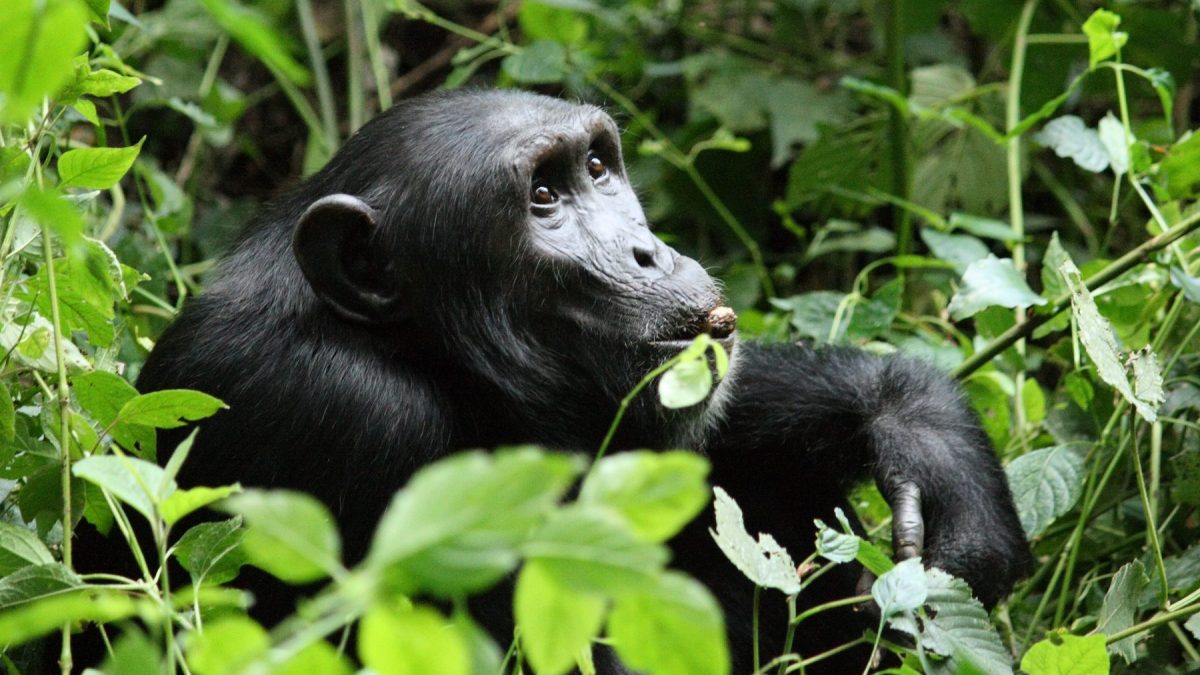
What Do Gorillas Eat?
Why Choose Uganda for Gorilla Trekking Safaris?
Uganda is the best destination for gorilla trekking safaris, its commitment to conservation, its rich biodiversity, and the unparalleled intimacy of its gorilla encounters.
Uganda gorilla trekking permits are more affordable than in Rwanda, yet the experience is equally thrilling.
With over 20 habituated gorilla families in Bwindi Impenetrable National Park, every trek promises a unique experience.
Tours at Ngeye Tours & Travel are designed to align with ethical tourism standards.
We ensure minimal impact on the environment and maximum benefit for local communities.
By participating in a trek with us, you support gorilla conservation efforts, community development and sustainable travel initiatives.
What Makes a Gorilla Safari with Ngeye Tours & Travel Special?
At Ngeye Tours & Travel, we believe that a safari should be more than a checklist of sightings.
It should be a transformative journey, our guides are trained not only in wildlife tracking but also in storytelling, ecology, and cultural heritage.
We offer customizable itineraries that include a mix of gorilla trekking, Batwa tours, cultural experiences, and relaxation safaris in other parts of Uganda such as Queen Elizabeth National Park, Kibale Forest (for chimpnzeesa), and Murchison Falls.
Each component is designed to complement the other, giving you the most well-rounded Uganda gorilla safari adventure possible.
Article by Ngeye Tours & Travel


